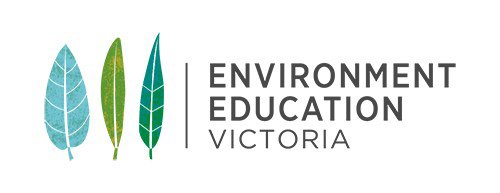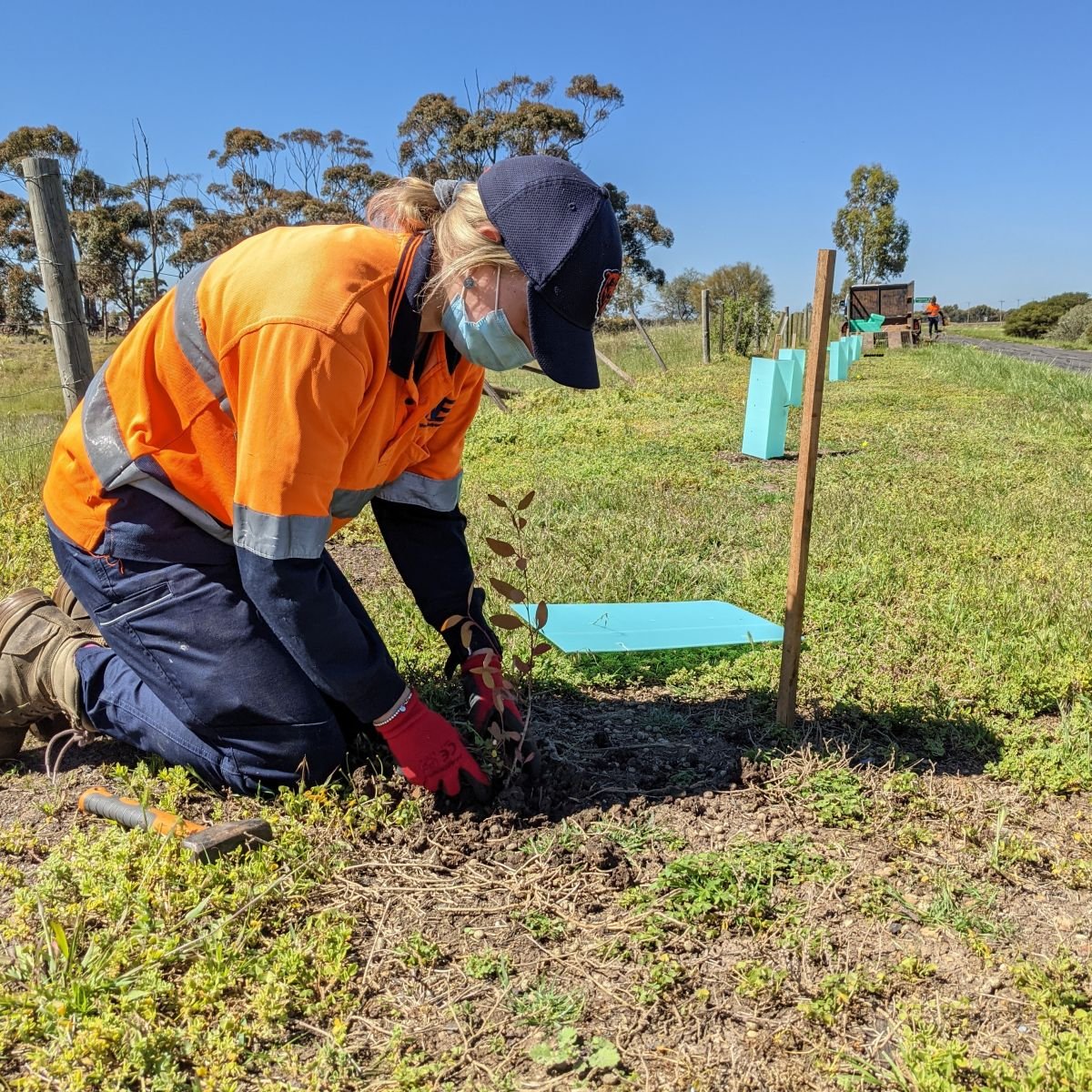More trees for a cooler greener west:
About the project
The Victorian government has a target of planting 500,000 trees in Melbourne’s West, to increase the urban tree cover.
Currently, the western metropolitan area of Melbourne has a tree canopy cover of just 5.5%, while the canopy cover in eastern suburbs is 25.9%.
Trees provide shading and cooling for urban areas and also improve air quality. This is increasingly important as we experience the impacts of Climate Change like heatwaves: trees have been shown to decrease surface temperatures by 10-25 degrees; and high rainfall events where trees improve stormwater management by filtering and slowing runoff.
Trees are important to help schools adapt to climate change too.
The Victorian Government has funded Environment Education Victoria to support schools with tree planting and connect schools with resources to teach about trees, ecosystems and sustainability.
In this phase of the project, we are planting 3,000 trees on school campuses in Brimbank, Hobson’s Bay, Maribyrnong, Melton, Mooney Valley and Wyndham.
What does Climate Change mean for our schools?
As weather patterns become less stable due to Climate Change, we can expect a range of impacts on schools and students’ ability to learn.
Air quality impacts (higher number of high fire danger days in Spring)
Temperature management in classrooms
Temperature of outdoor spaces at lunchtime and at the end of the school day
Temperature in cars and vehicles parked outside
Source: Victorian Government
Source: Victorian Government
The Impact of increased temperature on learning
A study completed by Harvard University in 2018 showed that, ‘on average, student achievement fell by 1 percent of a year’s work of learning for each additional degree Fahrenheit (about 0.5 degrees celsius) in temperatuve during the year preceding the exam’ Harvard Kennedy School
The ABC Program Big Weather, showed an experiment done at a school in Western Sydney where students mapped the temperature of their classrooms and were tested for response times in normal and hot classrooms. The results were stark. You can watch the video here.
We are already seeing the number of hot days per year increasing in Victoria.
How do trees help us adapt to climate change?
In urban areas, trees shade paved areas from the sun, preventing them from heating up during the day. Without trees, these surfaces can reach temperatures in excess of 50 degrees. This heat is then released at night and creates an Urban Heat Island Effect, commonly seen in cities.
Trees also pump moisture into the air through Evapotranspiration, which further cools surrounding areas.
In addition to making humans more comfortable, trees provide habitat for birds, insects and some mammals. This can provide opportunities for students to connect with nature, which is great for their wellbeing, and also to learn through observing natural systems.
This project is supported by the Victorian government through the “More trees for a cooler greener west” program.
Helping schools prepare for Climate Change through increasing urban tree cover.





